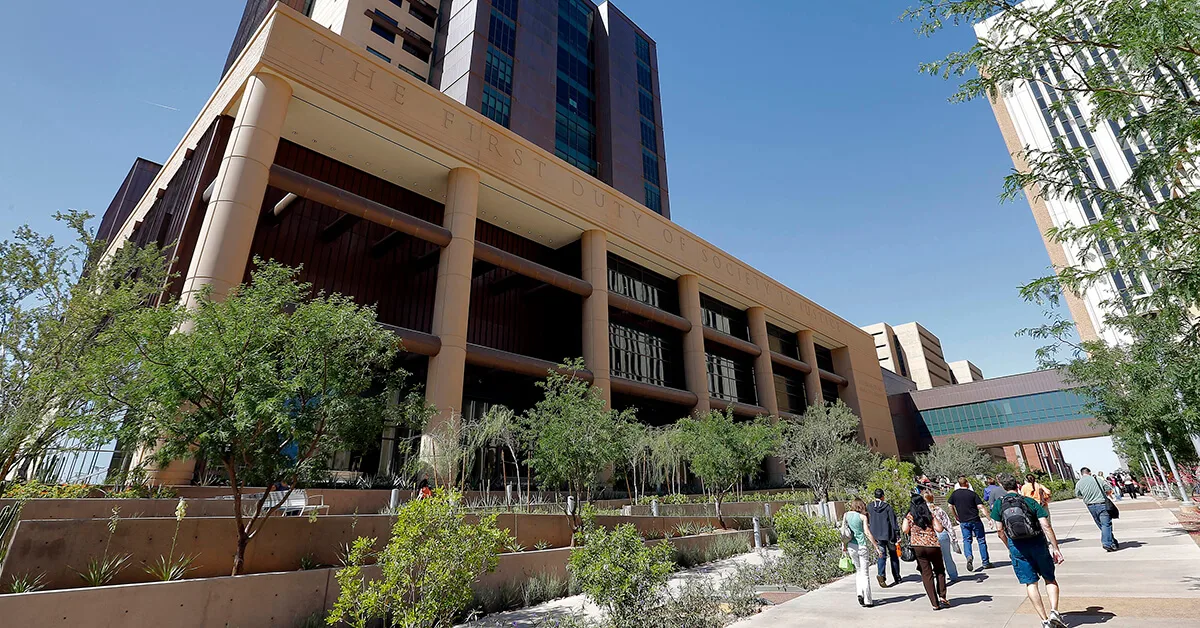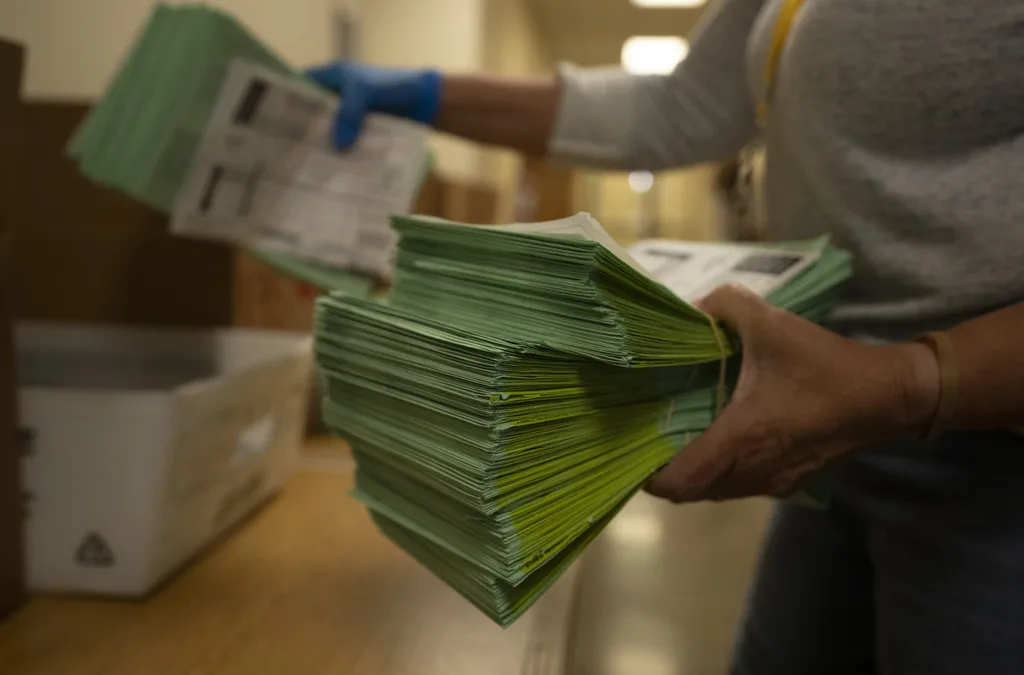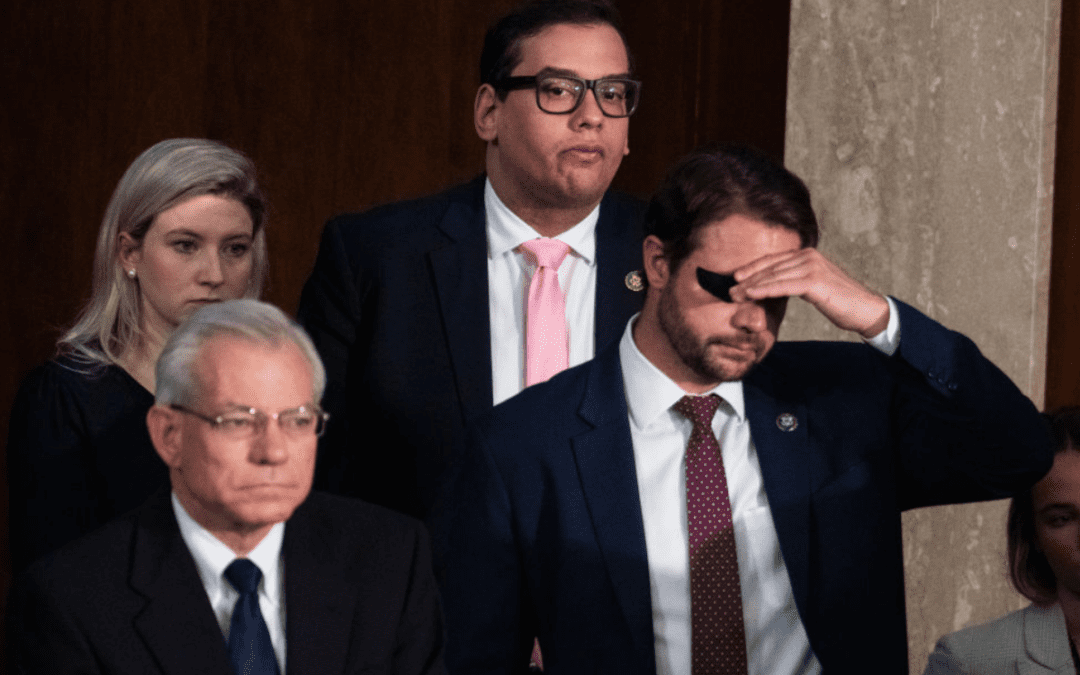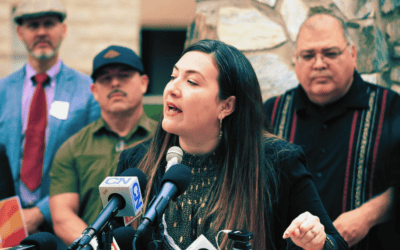
AP Photo/Matt York
The Arizona Advocacy Foundation report shows Arizona judges don’t represent those they serve.
A new report shows that Arizona’s judges are overwhelmingly white men—a vast overrepresentation compared to the state’s increasingly diverse population.
Approximately 91% of judges are white, and 66% are men, according to the 2021 report from the Arizona Advocacy Foundation.
Only six of Arizona’s 288 judges are Black. Latinos account for only 7% of the judges in the state despite making up more than 30% of the population.
The homogeneity of the judges at nearly every court level throughout the state leaves advocates questioning the impact on defendants.
“It comes down to feeling like the court is there for all of us,” said Joel Edman, Executive Director of the Arizona Advocacy Foundation. “Judges need to reflect the community as a whole.”
What Does the Report Show?
The report examined the 288 judges in Arizona’s court system, ranging from the Justice Court, to Superior, Appellate, and the state Supreme Court.
Most people come into contact with the Superior Court, which handles the majority of criminal cases. The Superior Court has the most judges with 179, but it’s the least representative of the population. Only 14 of the judges are Black, Indigenous, and people of color (BIPOC). The other 165 are white.
The makeup of the Superior Court is a stark contrast from the demographics of the state. Arizona’s population is about 55% white, according to census data. However, the court is still 80% white—making it the least representative court level in the state despite coming into contact with the highest segment of the population.
Meanwhile, people of color come into contact with the legal system and, on average, face harsher sentences than white people.
Arizona’s highest court levels are also extremely whitewashed, the report detailed. The Supreme Court, whose members are appointed, features no women of color and two Latinos. The Appellate court has only one BIPOC individual—a Latina/Black female judge.
The Justice Court was the most representative of the populations they serve. Approximately 78% are white, compared to the 54% of the state population, and 10% were Latino. Women of color were also underrepresented, with only eight serving throughout the state. Most counties were semi-representative of the population, but others like Yavapai, La Paz, Pinal, and Coconino counties only had white Justices of the Peace.
The Justice of the Peace position is elected, and their districts tend to be smaller, which gives residents a better chance to vote for someone that reflects them and their values. Edman speculated this could be why it’s the most representative court level.
Despite this, it’s still drastically under representative of the population served.
Why It Matters
This problem isn’t limited to Arizona.
Across the country, similar reports have found that judges don’t reflect the diversity of the population. A report from the Washington University Law Review found the discrepancy can significantly impact a judge’s decision-making as only certain points of view are represented in the court.
The homogenous nature of the judges keeps them from having the opportunity to learn from others’ life experiences.
This lack of representation can also shape American’s perceptions of the court system. Most people only come into contact with the court during especially vulnerable points in their lives, whether that be as a defendant in a criminal case or during divorce proceedings. Not seeing yourself or your life experiences reflected on the bench can be even more intimidating for those coming before the court.
“It can only further separate or create this sense of separation between the judge and the court system as this untouchable entity,” Edman said.

He said what? 10 things to know about RFK Jr.
The Kennedy family has long been considered “Democratic royalty.” But Robert F. Kennedy, Jr.—son of Robert F. Kennedy, who was assassinated while...

Here’s everything you need to know about this month’s Mercury retrograde
Does everything in your life feel a little more chaotic than usual? Or do you feel like misunderstandings are cropping up more frequently than they...

Arizona expects to be back at the center of election attacks. Its officials are going on offense
Republican Richer and Democrat Fontes are taking more aggressive steps than ever to rebuild trust with voters, knock down disinformation, and...

George Santos’ former treasurer running attack ads in Arizona with Dem-sounding PAC name
An unregistered, Republican-run political action committee from Texas with a deceptively Democratic name and ties to disgraced US Rep. George Santos...




